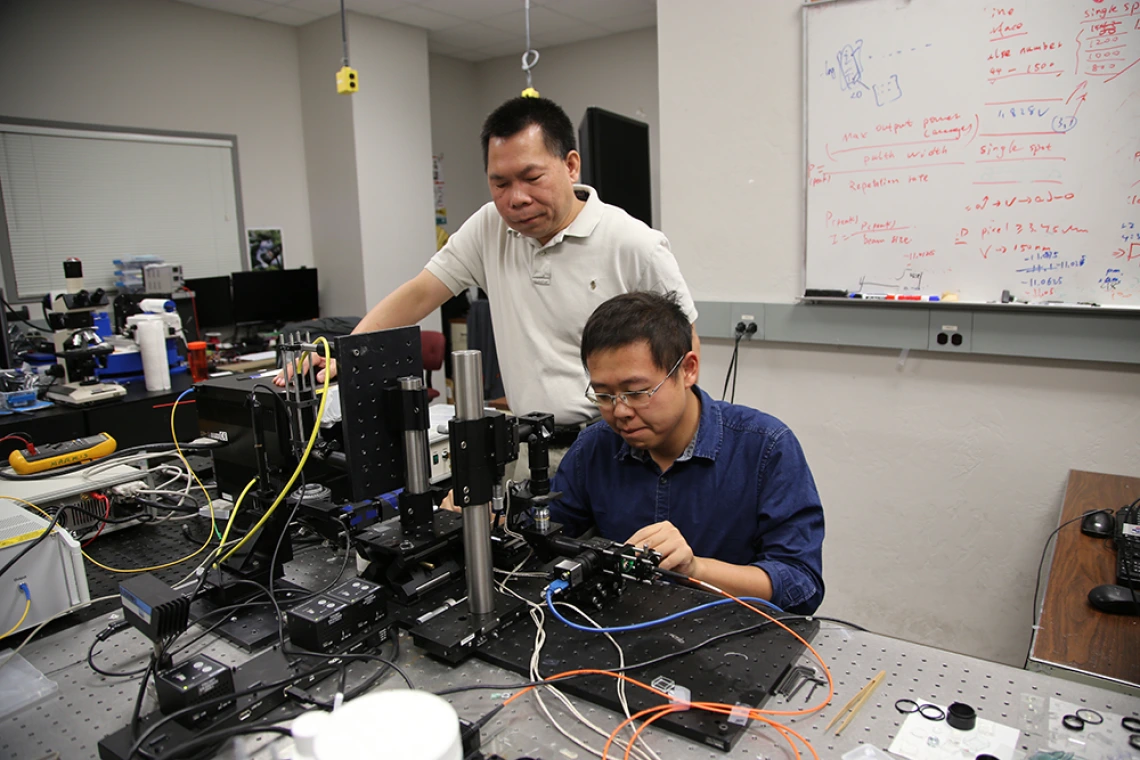From Inventions to Assets: UA program funds early-stage technologies for commercialization

|
Interested in learning more about Asset Development funding? Contact Joann MacMaster or a TLA licensing manager. |
Since its founding in 2013, Tech Launch Arizona (TLA) has worked on behalf of University of Arizona faculty and staff to commercialize inventions stemming from research. From new mining safety training software to nanoparticle technology, TLA helps to identify new research for commercialization and prepare it for a license either to an existing company or a newly formed startup.
In the end, the goal is the same: to get the products of UA research into the hands of people who can bring them to the world the public good.
As part of its process, the office assesses each invention, examining both the patent and market landscapes to evaluate its commercial potential. More often than not, these technologies are early-stage and need further development to make them attractive for market adoption. With that goal in mind, TLA has implemented an Asset Development Program to help fund such development and advance technologies to prepare them for adoption.
If a UA technology might merit funding, TLA and its network of experts work with the inventors to shape an Asset Development proposal, which includes a work plan with key milestones, budgets and a timeline.
Between 2013 and end of FY17, the program awarded a total of $3.74 million to advance 95 projects. In fiscal year 2017, TLA awarded $467,000 to sixteen technologies, with awards ranging from $2,700 to $65,000; the average award was $30,000.
“Working closely with the inventors as a team helps us identify challenges and make changes when and as needed,” says Joann MacMaster, director of business development forTLA. “In some cases the results of the initial proposal may be promising, but further work is required. When we face those situations, we may invite the inventor to do a follow-up Asset Development proposal.”
In situations where a startup may be the best path forward for commercialization, MacMaster says, TLA works with the inventors to develop the business team and commercialization plan. This will often help direct the Asset Development effort and facilitate the license process more quickly. Thus far, the strategy is proving effective.
“Over one third of the completed Asset Development projects have either already licensed into a startup or are currently in the pipeline,” she says. “These projects are proving effective and invaluable in moving forward startups based on UA intellectual property.”
“The way we’ve implemented our Asset Development Program is unique among universities,” says Doug Hockstad, assistant vice president for TLA. “This program, run continuously throughout the year rather than once or twice per year, allows TLA licensing managers to both champion and act quickly on new technologies. Every project, whether ultimately destined for a startup or existing company, is designed to move the technology closer to a license and, ultimately, commercialization.”
Inventors and technologies that received awards in FY2017 include:
- Chris Walker, PhD, Department of Astronomy and Steward Observatory, the College of Optical Sciences, and the Department of Electrical and Computer Engineering in the College of Engineering, for a terahertz transistor that may replace silicon in superconducting.
- May Khanna, PhD, Rajesh Khanna, PhD, Vijay Gokhale(link is external), PhD, Department of Pharmacology, College of Pharmacy and BIO5(link is external), for work on novel non-opioid drug compounds; the team also received an NSF I-Corps grant in 2016 and has gone on to launch startup to commercialize the technology.
- Merek Romanowski, PhD, Gerald Lemole MD,Department of Biomedical Engineering and College of Medicine, for a real-time reflex pupillometry device for neurophysiologic monitoring
- Rongguang Liang, PhD, College of Optical Sciences, for 3-D printing of freeform optics
- Jacob Schwartz, PhD, College of Chemistry and Biochemistry, for a diagnostic assay for diseases of protein aggregation
- Jeff Pyun, PhD, College of Chemistry and BioChemistry, for 3-D printing of freeform optics
- Marek Rychlik, PhD, Department of Mathematics, for an error correction system and method
In previous years, UA inventions that have benefited from Asset Development funds include an underwater adhesive, a camera system for real-time monitoring of cranial nerve pathways in anesthetized patients, a nanowire ultracapacitor, a new Veress needle for laparoscopic surgery, a polysilsesquioxane-based sunscreen, a nanopillar electrode for lithium-ion batteries, and a new assessment for Downs syndrome.
TLA provided its last Asset Development Program update in January of 2017.
While Asset Development funding is only for inventions representing UA intellectual property, TLA also offers funding through the National Science Foundation Innovation Corps (NSF I-Corps) program. The NSF I-Corps program prepares scientists and engineers to expand their focus beyond the laboratory and increase the impact of basic research. The program accelerates the commercialization of new technologies, nurtures students and/or faculty, encourages collaboration, and helps teams assess customer and market opportunities for possible startups. Teams accepted into the program received awards of up to $3,000 to use for customer discovery; the award also qualifies the team to receive future NSF funding. The office is currently accepting applications for the I-Corps program.

